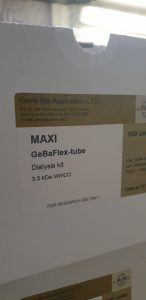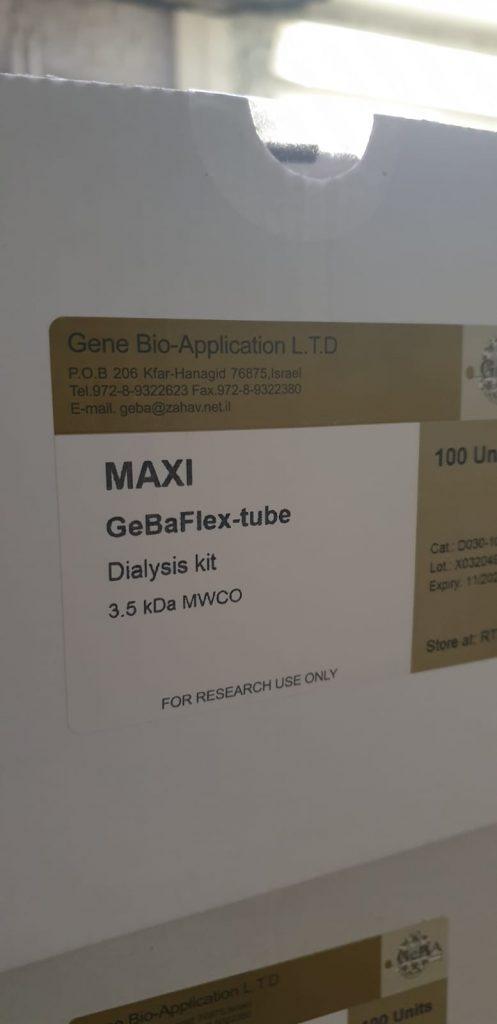Cytology is the gold customary technique for the differential prognosis of thyroid nodules, although 25-30% of them are categorised as indeterminate. We aimed to arrange a ‘thyroid risk score’ (TRS) to extend the diagnostic accuracy in these circumstances. We prospectively examined 135 indeterminate thyroid nodules.
The pre-surgical TRS derived from the sum of the scores assigned at cytology, EU-TIRADS classification, nodule measurement, and molecular characterization, which was achieved by our PTC-MA assay, a personalized array capable of cost-effectively consider 24 totally different genetic alterations together with level mutations and gene fusions.
We discovered that the risk of malignancy (ROM) elevated paralleling the score: within the class >four and ≤ 6 (low suspicion), >6 ≤ 8 (intermediate suspicion), and >8 (excessive suspicion), ROM was 10%, 47% and 100%, respectively. ROC curves chosen the score >6.5 as the most effective threshold to distinguish between malignant and benign nodules (P<0.001). The TRS>6.5 had a greater efficiency than the one parameters evaluated individually, with an accuracy of 77% and 82% upon inclusion of noninvasive follicular thyroid neoplasm with papillary-like nuclear options amongst malignant or benign circumstances, respectively.
We generated for the primary time a score combining an economical molecular assay with already validated instruments, harboring totally different specificities and sensitivities, for the differential prognosis of indeterminate nodules. The mixture of various parameters diminished the variety of false negatives inherent to every classification system. The TRS >6.5 was extremely suggestive for malignancy and retained a excessive accuracy within the identification of sufferers to be submitted to surgical procedure.
Angioimmunoblastic T-cell lymphoma masquerading as granulomatous lymphadenitis: Fine needle aspiration cytology, medical and radiology correlation
Fine needle aspiration (FNA) is a minimally invasive approach used within the preliminary prognosis of superficial lesions, together with lymphadenopathy. Its profit in lymph node pathology, nonetheless, is extremely variable, particularly in heterogeneous lymphoproliferative issues like angioimmunoblastic T-cell lymphoma (AITL). AITL is an aggressive hematopoietic malignancy, histologically characterised by medium-sized neoplastic cells, excessive endothelial venule proliferations, and a heterogeneous hematolymphoid background.
Diagnostic problem arises at lymph node FNA, the place cytology yields nonspecific polymorphous collections of medium-sized lymphocytes, hematolymphoid cells, dendritic cell-lymphoid complexes, and lymphoid tissue fragments with transgressing blood vessels; findings mimicking reactive lymphadenopathy. We current a case of a 62-year-old male who offered with cervical lymphadenopathy.
Neck degree II lymph node FNA revealed granulomatous irritation. A cell block was ready for extra infectious research however was non-contributory on account of lack of fabric. Flow cytometry confirmed no proof of non-Hodgkin lymphoma. Excisional biopsy revealed lymph node effacement by a T-cell lymphoproliferative dysfunction constant with AITL. This case contributes to the paucity of literature concerning the cytologic options of AITL noticed at FNA, and turns into the premier case to emphasise the addition of granulomatous options.
Despite the aggressive nature of this entity, circumstances are continuously misdiagnosed as reactive on preliminary analysis leading to delay of remedy. This report serves to lift suspicion of AITL and different polymorphic mobile lymphomas within the setting of reactive granulomatous cytomorphology, thus prompting histological examination of tissue biopsy, expediting remedy, and finally offering potential enchancment to the present prognosis.
The accuracy of tremendous needle aspiration cytology within the medical prognosis of minor salivary gland tumours
The goal of this research was to research the accuracy of tremendous needle aspiration cytology (FNAC) and biopsy for the medical prognosis of minor salivary gland tumours (MSGTs). This retrospective research of 32 MSGT circumstances was performed over a 5-year interval. Clinical options together with age, intercourse, and site of the tumour had been obtained from the affected person medical information. All circumstances had been additionally assessed histologically in accordance with the 2017 World Health Organization Classification of Head and Neck Tumours.

The outcomes of FNAC and biopsy had been correlated with these of histopathology, and their sensitivity, specificity, and diagnostic efficacy had been calculated utilizing histopathology because the gold customary. Eighteen malignant MSGTs (56.3%) and 14 benign MSGTs (43.8%) had been recognized by pathological prognosis. The commonest malignant tumour was mucoepidermoid carcinoma (seven circumstances, 38.9%).
Most benign circumstances had been pleomorphic adenomas (13 circumstances, 92.9%). FNAC was carried out for 23 circumstances and biopsy for 13 circumstances. The sensitivity and specificity of FNAC had been 66.7% and 91.0%, respectively, whereas these of biopsy had been 90.0% and 100.0%, respectively. Although FNAC is a minimally invasive and cost-effective process, it’s much less correct than biopsy within the evaluation of MSGTs. Repeated FNAC or biopsy must be thought-about in damaging and unsatisfactory FNAC circumstances.
Is there a Role for Frozen Section Evaluation of Parotid Masses After Preoperative Cytology or Biopsy Diagnosis?
Fine-needle aspiration (FNA) biopsy reliably diagnoses parotid gland lesions preoperatively, whereas intraoperative frozen part (FS) has the extra good thing about assessing surgical margins and refining diagnoses; nonetheless, the position of FS within the setting of prior FNA prognosis shouldn’t be properly established. Our purpose was to find out whether or not FS ought to nonetheless be carried out after a previous FNA/ CNB prognosis.
Parotid gland resections from January 2009 to January 2020 had been recognized; nonetheless, solely sufferers who had each FNA and FS constituted our research inhabitants. For the aim of statistical evaluation, FNA diagnoses had been categorised into non-diagnostic (ND), non-neoplastic (NN), benign neoplasm (BN), indeterminate, and malignant. FS diagnoses had been categorised into benign, indeterminate, or malignant. Resections had been dichotomized into benign and malignant and considered the gold customary to subsequently calculate diagnostic accuracy of FNA and FS.
A complete of 167 parotid gland resections had been recognized, however solely 76 sufferers (45.5%) had each FNA and FS. In 35 circumstances deemed as benign preoperatively, three (8.6%) had been reclassified as malignant on FS. Out of 18 lesions reported as malignant on FNA, 4 (22.2%) had been interpreted as benign on FS, with three of those benign lesions confirmed on everlasting slides.
In addition, in sufferers with each FNA and FS, in comparison with FNA, FS was capable of present a definitive prognosis in all 5 ND circumstances and in 61.1% (11/18) of indeterminate tumors. Intraoperative evaluation offered a relative improve of 33.3% in specificity and 38.5% in constructive predictive worth when in comparison with preoperative FNA. The addition of FS to FNA was useful to additional refine the diagnoses of parotid gland lesions, which can present higher steerage for surgical intervention.
Human papillomavirus an infection standing of single cells remoted from cervical cytology specimens by easy handbook microdissection
Human papillomavirus (HPV) testing with cytology triage for cervical most cancers screening has been confirmed to be helpful. It is taken into account {that a} vital proportion of HPV-positive ladies adopted by reflex cytology have had multiple-type HPV infections fairly than single-type infections. However, the results of multiple-type infections on adjustments within the cytomorphology of exfoliated cervical cells haven’t been investigated.
The purpose of this research was to validate a easy handbook microdissection (MMD) maneuver and examine the HPV an infection standing of single cells remoted from Papanicolaou (Pap) smear ready from ladies with multiple-type infections. Using cytology samples from 90 sufferers with irregular Pap smear outcomes, we evaluated the effectivity of the MMD process and decided the HPV an infection standing of single squamous intraepithelial lesion (SIL) cells microdissected from sufferers with multiple-type an infection.
In validating the MMD process, the HPV-positive fee was 81.5% utilizing 119 MMD samples from the Pap smear in 61 circumstances with single-type an infection. This MMD process was capable of effectively gather single cells. Of 119 MMD samples from 29 circumstances with multiple-type an infection, the HPV-positive fee was 42.9%, and most (96.1%) MMD samples exhibited just one genotype. Our MMD maneuver efficiently recognized HPV genotypes utilizing single cells remoted from cytology specimens.
[Linking template=”default” type=”products” search=”Cytology Transport Media” header=”3″ limit=”126″ start=”4″ showCatalogNumber=”true” showSize=”true” showSupplier=”true” showPrice=”true” showDescription=”true” showAdditionalInformation=”true” showImage=”true” showSchemaMarkup=”true” imageWidth=”” imageHeight=””]
A majority of single SIL cells ready from multiple-type an infection circumstances turned out to include just one genotype. In the long run, the MMD technique might be utilized whereas learning the connection between the morphological adjustments exhibited by SIL cells on Pap smear and the contaminated HPV genotype.

